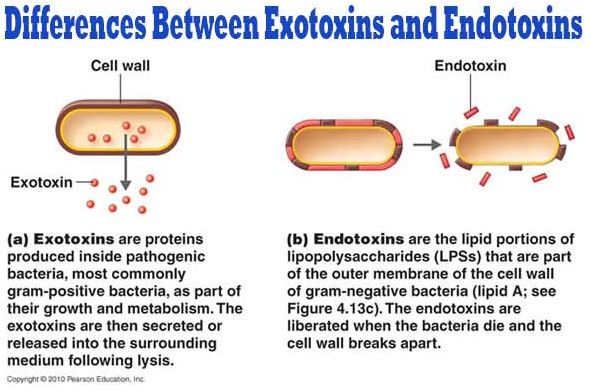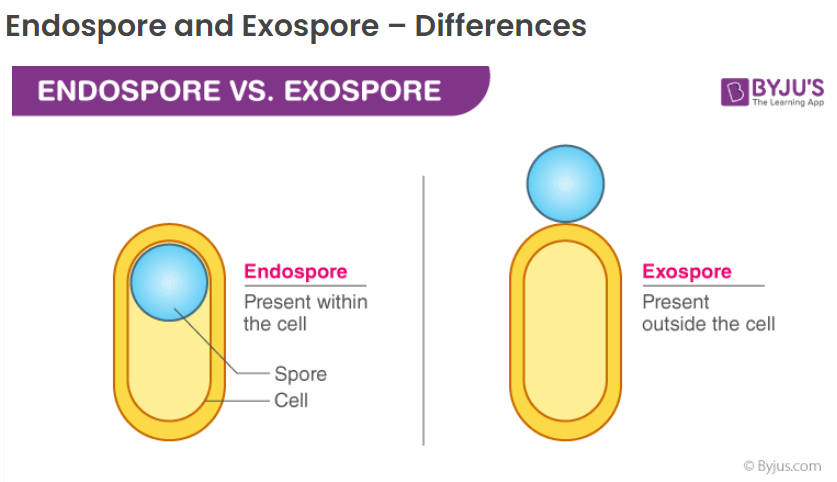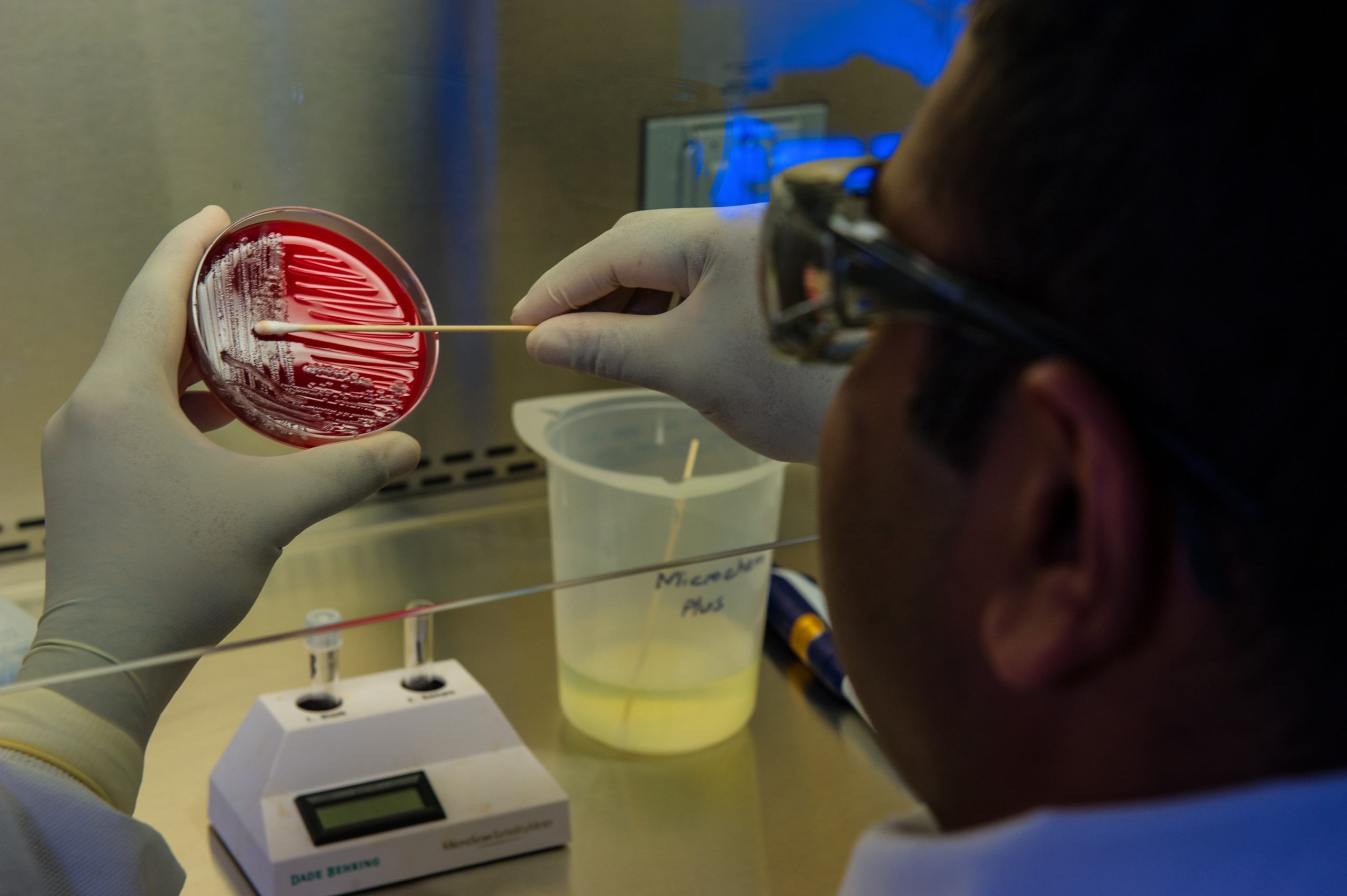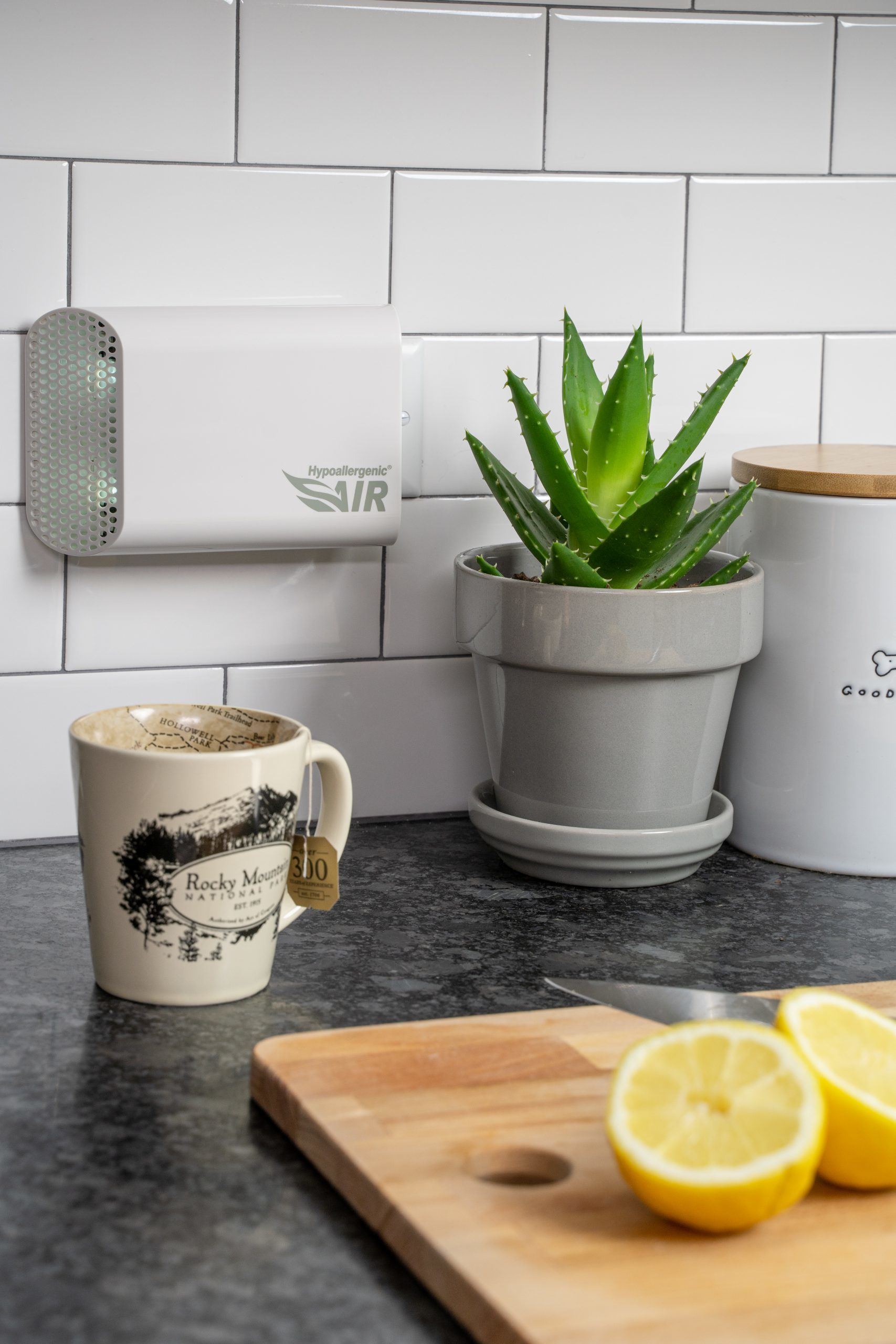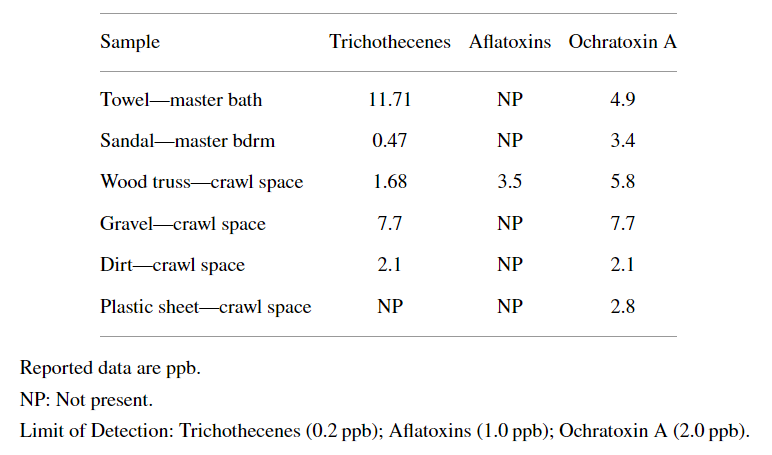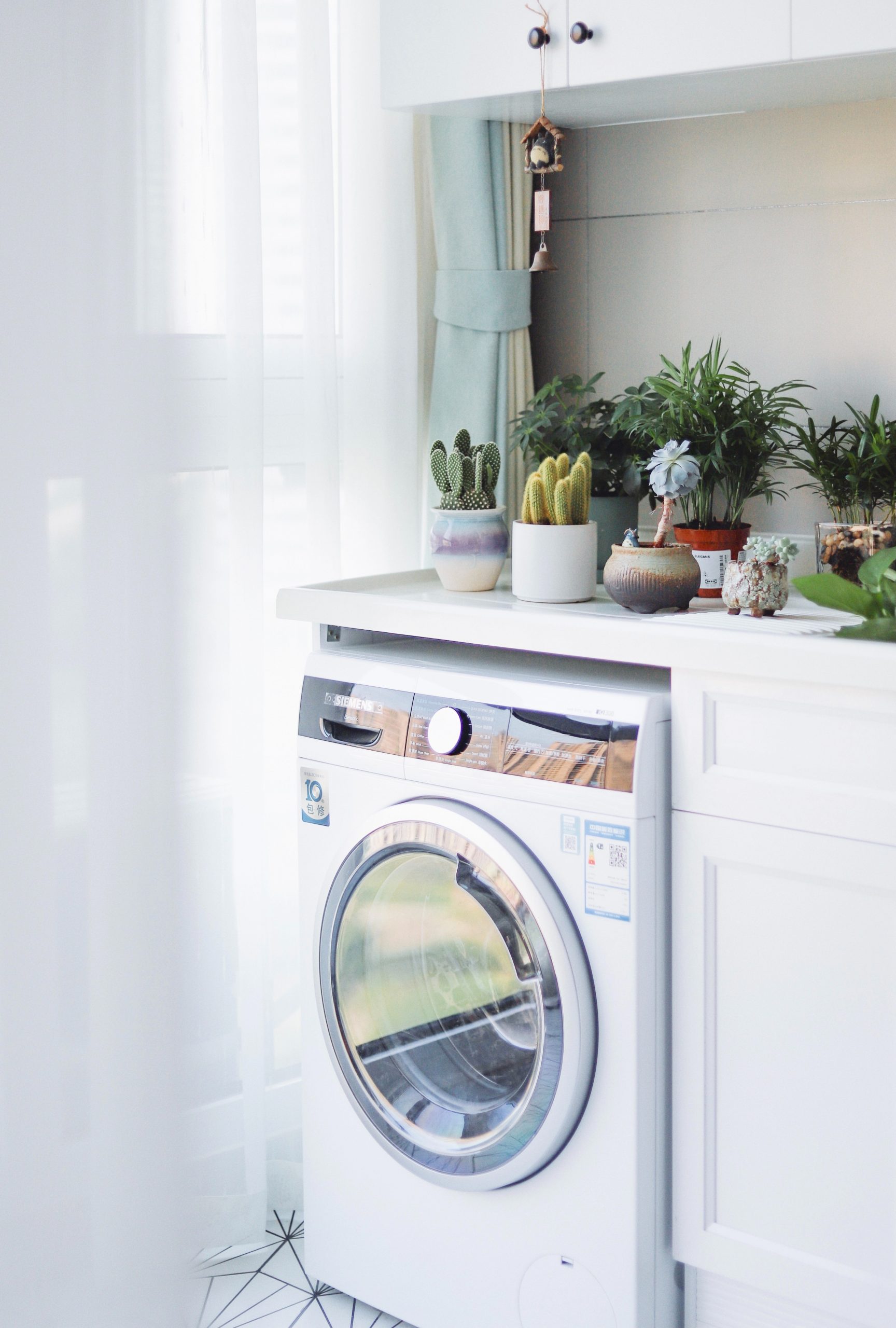Mold Spores, Endospores and Exospores…what are the differences?
Mold Spores, Endospores and Exospores…what are the differences?
I think most of us are familiar with spores that mold produces, which act similarly to dandelion seeds that can be carried off by air currents to relocate and start growing new “plants” elsewhere. However, there are similar terms using the word “spore” in the bacteria world that don’t always mean the same thing! Here’s some explanation to clear things up.
First of all, it’s good to get refreshed regarding the two major classes of bacteria, “Gram-negative” and “Gram-positive”. These classes are based on a test developed by scientist Christian Gram in 1884, which differentiates the bacteria using a purple stain. According to webmd.com, bacteria either have a hard, outer shell, or a thick, mesh-like membrane called peptidoglycan. The hard outer shell will resist the purple stain, and show up as a red color. These are called “gram negative” because the purple stain did not show. Bacteria with the peptidoglycan absorb the purple stain much more easily and are called “gram positive”. Here is a diagram showing the differences in the cell walls between these two types:
Source: Difference Between Gram-Positive and Gram-Negative Bacteria
These differences in cell structure cause gram-positive bacteria to release toxins that are different from gram-negative bacteria, as we explained in our article What are Endotoxins and Exotoxins and where do they come from?
Here is a diagram from that article that’s helpful:
Source: Differences Between Exotoxins and Endotoxins
Here’s where it gets confusing, however, because the “Exo-” prefix associated with gram-positive bacteria, and “Endo-” with gram-negative bacteria only applies to their toxins. Moving on to spores, bacterial “spores” usually refers to endospores, endospores are usually associated with gram-positive bacteria, and endospores aren’t formed the same way that mold spores are. Let’s look at endospores first…
Endospores are not tiny little “seeds” released by a gram-positive bacteria. Instead, they are a hardened shell that forms inside a bacterial cell when it starts to sense that resources (food and water) are drying up. This little endospore with its essential life-code inside is then left when the original bacterial cell dies, and the endospore is tough-as-nails while waiting for a better environment to allow it to flourish and multiply again. One author describes them as being harder than Bruce Willis to kill (in the movie Die Hard, of course)! (Endotoxins or Endospores?) Endospores exhibit no signs of life, however when the environment returns to a favorable state for bacterial growth the bacterial endospore will germinate and return to a normal state. (What are Bacterial Endospores?) So, unlike mold spores of which one mold cell can make thousands of spores, if not millions, only one gram-positive bacteria makes one endospore. The tough outer layer of an endospore is actually called an exosporium, which makes it a little bit more confusing.
Exospores are more similar to mold spores and they are a form of bacterial reproduction. Exospores are produced by the members of the phylum Actinobacteria (Actinomyces, Streptomyces, etc). They form outside the bacterial wall and are released by “budding” when they separate from the bacterial wall. Exospores are also resistant to destruction and do not show signs of life until their environments have sufficient water and nutrients for them to grow. Here is a diagram showing the difference between endospores and exospores:
Source: Difference Between Endospore and Exospore
Here are some similarities between Endospores and Exospores:
Endospore and Exospore both spores are produced under unfavorable environmental conditions.
Endospore and Exospore both are unicellular and have a resistant structure.
The process of making spores in both types of known as sporulation.
Endospores and Exospores both are reproductive cells.
Now that we know WHAT they are, what is the danger of spore-forming bacteria? Bacterial spores may be in the quiescent state for dozens or hundreds of years but after they appear in the favorable conditions of a human or animal organism, they turn into vegetative forms causing an infectious process. We wrote about these in our article “‘Sleeper’ bacteria spores are like mold spores”. The greatest threat among the pathogenic spore-forming bacteria is posed by the bacterial agents of anthrax (B. anthracis), food toxicoinfection (B. cereus), pseudomembranous colitis (C. difficile), botulism (C. botulinum), and gas gangrene (C. perfringens). (Learning from Nature: Bacterial Spores as a Target for Current Technologies in Medicine (Review))
Endospores literally work inside our immune system to accomplish their deadly mission. In the example of illness caused by anthrax, when these endospores are inhaled by a human or animal host, they are engulfed by macrophages and dendrite cells, which are immune cells that circulate in the lymphatic system. Spores transition from endospores to active bacteria inside the phagocytes and dendrite cells, multiply, and produce toxins. In the lymph nodes, immune cell death takes place with subsequent bacterial invasion to the blood flow, active proliferation, and toxin production which mediates clinical manifestations of the infection, resulting in lethal outcome. (Learning from Nature: Bacterial Spores as a Target for Current Technologies in Medicine (Review)) Sadly, animals like cows and sheep are also susceptible to anthrax, especially when grazing land is dry and the soil can be inhaled as dust, because these endospores are found naturally in the soil. This was the case in Australia in February 2024 when 10 beef cattle died of anthrax poisoning and a similar number of sheep died from anthrax poisoning in 2023.
How do you get rid of Endospores and Exospores?
Endospores are one of the most resistant specialized dormant cells, being able to resist high temperature (up to 100 °C), ionizing radiation, chemical solvents and detergents. Mature exospores produced by Streptomyces are more resistant to desiccation, low temperature and osmotic changes (changes in permeability) than vegetative (living) cells. However, they are less resistant to heat and desiccation than endospores. (Multiple roads lead to Rome: unique morphology and chemistry of endospores, exospores, myxospores, cysts and akinetes in bacteria) Killing endospores, then, represents the most difficult task. Autoclaves for cleaning medical equipment are set to run at the proper time, pressure and temperature. Using an exposure time of at least 15 minutes and 15 PSI at 121 celsius usually kills endospores on durable medical equipment. For entire rooms, however, sporicides are used at preset times (like biweekly or monthly). (Endotoxins or Endospores?) Sporicides can be composed of toxic chemicals like phenol (a mutagen, which is a potential cancer risk); this is the chemical used in the popular Sporicidin Disinfectant Solution. However, less harmful chemicals like Hydrogen Peroxide and Acetic Acid are also used. The combination of those two compounds is Peroxyacetic Acid (PAA). Acetic acid is also known as vinegar and has that acidic smell; PAA also has a vinegar smell so that personal protective equipment like masks, goggles and gloves may be required to use them. The majority of sporicides on the EPA’s Registered Antimicrobial Products Effective Against C. diff Spores [List K] are sodium hypochlorite (bleach). Bleach is definitely something you want to avoid bringing into your home.
There is a very non-toxic product on this endospore-killing list, however: hypochlorous acid. Even though it sounds toxic and it’s related to bleach (which is sodium hypochlorite), hypochlorous acid is much safer as well as being a far superior disinfectant to bleach. One of the most fundamental reasons for this is its pH. Hypochlorous acid exists at a near-neutral pH (5-7). Bleach resides at a highly-alkaline pH (8-13). The germ-killing properties of bleach are derived from the presence of hypochlorous acid. However, because of its high pH, the majority of the hypochlorous acid present in bleach ends up getting converted to hypochlorite, which is a less effective disinfectant. (Hypochlorous acid versus bleach: What's the difference?)
Other strategies to killing endospores are mentioned in this paper according to the part of the endospore they target; here are some interesting ones:
“Germinate to eradicate” involves tricking the endospore into reviving and then killing the vegetative cells, because the vegetative cells are easier to kill. Triggers for spore germination include temperatures close to 37°C (98.6°F, sound familiar?), making water available to “rehydrate” the cell through its bacterial cell walls, and the availability of nutrients. (Why Are Bacterial Spores Hard To Sterilize?) However, warm water and gloppy nutrients are not at all suitable for your home’s surfaces!
Alcohols and aldehydes like ethanol and gluteraldehyde can work against the inner membrane of the endospore, but glutaraldehyde (0.5%) can irritate nasal passages and eyes, as well as severely burn skin.
Enzymes like proteases can degrade the “coat” of the endospore and even induce germination, so that it is easier to kill. (Enzyme-driven bacillus spore coat degradation leading to spore killing)
Dodecylamine, a yellow liquid with an ammonia like odor, kills spores of all species that have been tested, including Bacillus species and C. diff.; however, it’s toxic to humans and animals.
The most important thing about killing spores is to make sure they are dead, or if they are not, to make sure they are damaged beyond being able to reproduce! Unfortunately, only a lab can determine whether endospores are present (PCR test, by re-animating them, or using a special green staining technique), so don’t “guess” whether a DIY solution has taken care of them. Using a non-toxic product from the EPA’s list K (like hypochlorous acid) and making sure you give it ample “residence time” (ie. read the usage instructions and don’t mop it up right away) will ensure that you don’t suffer from those tough endospores re-animating in your home or body. Here are some additional tips:
Clean regularly with non-toxic ingredients. The less dust and dirt we allow to accumulate in our homes, the less microbe spores are lying around. Check out our article on Tackling Dust in Your Home.
The FDA states that over-the-counter antibacterial hand soaps don’t protect us from disease any better than regular soap and water. The cleansing action happens in the thorough agitation of soap and water over hands, and a good rinse with water. Many “antibacterial” soaps also contain ingredients, like triclosan, which can be harmful to us over time.
Since you can’t easily scrub and rinse items like your countertop or toilet seat with soap and water, however, different solutions need to be employed there. Sure, you can get antibacterial cleaning sprays, but the same concerns apply: are they safe long-term? Instead, opt for cleaners that are non-toxic and are less likely to create antibiotic resistance. We’ve recommended the following cleaners for these reasons:
Because hypochlorous acid is an oxidant, it leaves nothing behind for bacteria and viruses to create resistance to and therefore does not contribute to the superbug (multidrug-resistant organisms) dilemma.(The Role of Hypochlorous Acid in Managing Wounds: Reduction in Antibiotic Usage) Hypochlorous is not bleach; in fact, it’s superior to bleach. Some hypochlorous cleaners include Force of Nature and CleanSmart Daily Surface Cleaner
Our all-purpose, non-toxic cleaner TotalClean combines both copper and iodine, and when they are combined, they produce peroxide! In simple terms, the peroxide acts as an “oxidizing agent”, destroying the means for bacteria to take in oxygen and suffocating them.
Of course, change your HVAC filter regularly so that spores do not find their way to your air handler’s evaporator coil, where moisture can allow them to reactivate. We’ve got some great filters with activated carbon and MERV 10-14 ratings (for more on MERV, check out our article HVAC filter changes are vital to your indoor air quality.
The technology in our bipolar ionizers like our Germ Defender, Upgraded Air Angel Mobile and Whole Home Polar Ionizer has been tested against bacteria such as E. coli, MRSA and C. diff (see test results here), so why not add them to your non-toxic cleaning arsenal as a passive way to keep the spores under control?
Enter your text here...


